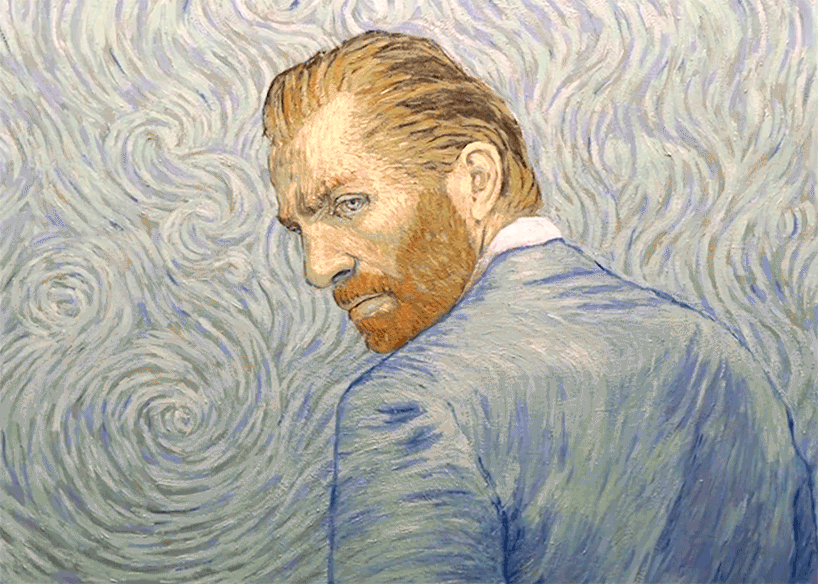Blue plaques are a neat little indicator of history. They lend meaning to places that would otherwise just be buildings or houses on a street – they notify those passing that someone or something significant happened here. By proxy, the mere act of walking past said building becomes significant. Now, it would be petty to suggest that those at English Heritage who decide who gets a blue plaque are biased - it would be extremely petty indeed. Let’s just get that very, very clear. Petty. That said, the number of blue plaques across the Thames in North London (670) compared to beautiful, sunny South London (130) is shocking. Such is the case that Brixton and Stockwell have only three each. Alone, that’s barely enough, so we’ve decided to put them together in a list of the blue plaques of Brixton, Stockwell & Kennington.
Vincent Van Gogh – 87 Hackford Road
Painter
Though on the way to Oval, Hackford Road occupies a middle ground between Kennington and Stockwell, so we’ll give this one to Stockwell. It’s hardly a surprise that Van Gogh lived and worked here; his beautiful work really reflects the area... Probably the most famous geezer on this list, Van Gogh does not really need an introduction. He painted some pretty iconic pictures, and lived in Stockwell between 1873 and 1874, even taking time out to draw his humble abode.
While at the address, Van Gogh fell in love with one (or both) of his hosts: his landlady and her daughter. Classic Vincent. Aged 19, a slip-of-the pen letter from his sister suggests that his affections were for the older of the two women. While there’s very little evidence of any sexual affair at all, we do know that he wrote a letter to his brother, Theo, boldly approving of sex before marriage. Turns out he’s not unlike another person on this list - more on them later. By his 21st birthday, it is thought that he had been asked to leave and did so in what his family described as a 'sombre' mood. His sister wrote that whenever people failed to live up to his illusions, he was so disappointed that he “throws them away like a bouquet of wilted flowers”.
C.L.R. James – 165 Railton Road
West Indian Writer and Political Activist
Cyril Lionel Robert James was an Afro-Trinidadian journalist, historian and author who spent the last years of his life living in Brixton above a political group and journal called Race Today - the leading voice of Black politics in 1970s Britain. In fact, the whole Railton Road area, named ‘The Frontline’ by locals, was a hotbed of activism and was home to the Anarchist News Service, Squatters Groups, a food co-operative and the South London Gay Community Centre, among others. Railton Road also went on to see the beginning of the 1981 Brixton Riot. Today, Railton Road is mostly residential and is home to the 198 Gallery - an inspiring community charity focusing on supporting young black artists.
To say C.L.R. James was merely one of the most influential historians of displaced African ethnic groups would be an understatement. James was also the first black West Indian to have a novel published in the United Kingdom when Minty Alley was published in 1936, while he is also lauded as the author of the greatest cricket book ever written – Beyond a Boundary. A famed socialist, he met Trotsky in the late 30s in Mexico where they disagreed on the role of African-Americans in socialism in the U.S., cos, you know, you’ve got to tell Trotsky like it is.
Dan Leno – 56 Akerman Road
Music Hall Comedian
Dan Leno, real name George Wild Galvin, was a leading music hall comedian and musical theatre actor of the later Victorian era. He derived many of the characters he portrayed in his performances from the individuals he observed throughout his life growing up, in working-class surroundings, in both Liverpool and London. He moved to Brixton in 1898 which became the backdrop for his decline both mentally and physically. Struggling with the insecurity of being seen as purely a comic actor he had a mental breakdown in 1901, and left Brixton to be committed in an asylum for the insane. He died a year after being released in 1904, only eleven days previously having given his final performance.
Violette Szabo – 18 Burnley Road
Secret Agent
French-born Violette Szabo, nee Bushell, was a British Special Operations Executive agent during the Second World War. Essentially, she was a secret agent and was brought up on Burnley Road in between Stockwell and Brixton. Upon the outbreak of war, she was working in Le Bon Marche in Brixton - now T.K. Maxx. She met and married French officer Étienne Szabo in 1940, who later died in North Africa in 1942. Spurred on by her husband’s death she accepted an offer to join the S.O.E. Having conducted missions in France as part of the French Resistance, she was captured, tortured and executed in 1945.
Henry Havelock Ellis – 14 Dover Mansions, Canterbury Crescent
Pioneer in the Scientific Study of Sex
Henry Havelock Ellis was a progressive and physician best known for his work in studying human sexuality. He co-authored the first English medical textbook on homosexuality – Sexual Inversion – which treated homosexuality as neither a disease nor as a crime. Having exhibited his disdain for outdated moral codes by marrying women’s rights activist and open lesbian Edith Lees in 1891, Havelock Ellis really pushed the boat out by also moving to Brixton. When he left Brixton is unclear, but it is likely that he lived in the area at a similar time to Vincent Van Gogh.
Lilian Baylis – 27 Stockwell Park Road
Manager of the Old Vic and Sadler’s Wells Theatre
Lilian Baylis not only ran the theatre company based at the Old Vic that would eventually become The Royal National Theatre, she ran the opera company which eventually became the English National Opera and also the ballet company which is now the Royal Ballet. Baylis was a major influential figure in the shaping and creation of the modern creative landscape of the United Kingdom and, during her time at the Old Vic, she nurtured the talent of legendary actors like Laurence Olivier, John Gielgud, Michael Redgrave and Alec Guinness (to name but a few). Throughout the large part of this time she lived on Stockwell Park Road, where she eventually died in 1937, at the age of 63.
Field Marshal Bernard Law Montgomery – 52 - 54 Kennington Oval
British Senior Army Officer
Field Marshal Montgomery, or ‘Monty’ as he was more widely known, is widely considered to be one of the most crucial figures in Allied success during the Second World War. After initially achieving great success in North Africa in 1942, he also oversaw the success of Operation Overlord from the initial landing of soldiers after D-Day up to the Battle of Normandy. He continued to command forces in North West Europe until the unconditional surrender of the German forces in the Netherlands in 1945. He was born in Kennington in 1887, back when it was a part of Surrey, and would spend the first eleven years of his life there until his father was made Bishop of Tasmania in 1889.
Charlie Chaplin – 39 Methley Street, Kennington and East Street, Walworth
Film Actor
Like Van Gogh, Sir Charles Spencer Chaplin needs no introduction. He is an icon. Without question one of the most known figures around the world whose popularity has endured long after his death at the age of 88 in 1977. Now, these plaques of his in Kennington and nearby Walworth are not actually ‘official’ blue plaques, though one is more official than the other. The one commemorating his birth in Walworth was erected by Southwark Council, as voted by the people of Southwark, while the other on Methley Street was erected by The Dead Comics Society.
Chaplin was initially born on East Street, the son of Charles Chaplin Snr and Hannah Hill, and would spend the first three years of his life there until his father discovered his mother to have been unfaithful and divorced her. After spending two years living with his mother’s new husband Leo Dryden, his mother was once again forced to move after the breakdown of another marriage. This time his mother took up work as a seamstress and moved to Methley Street (above) in Kennington, where he would develop the famous shuffle after mimicking a neighbour of his known as Rummy Binks. He would eventually leave Kennington after his mother’s physical health failed and she was committed to Lambeth Infirmary, upon which Charlie and his brother Sydney entered an orphanage in Hanwell, Middlesex.
WHAT IS THE SOUTH LONDON CLUB CARD?
The South London Club is a local discount card to help support small independent businesses across South London whilst saving all who live, work & play in South London money! With over 500+ local discounts to choose from, you will discover & explore all the best hidden gems in South London. Join over 4,000 of us & celebrate all that's independent in South London!























